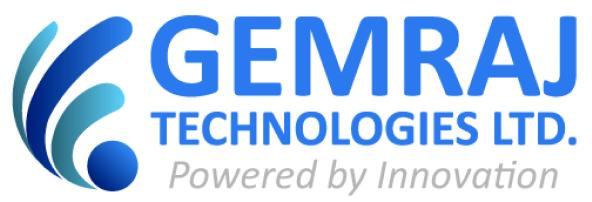Technology changes, or in other words upgrades, within a blink of an eye. New improvements today are facilitating business growth in better ways than before. 2020 was a year of unprecedented upheaval and chaos, and many of the changes that we are witnessing today have been brought about courtesy of the global COVID-19 pandemic, which continues to affect every possible facet of life. Businesses today are faced with multiple challenges aggregated by the exigencies actuated by a need for the contactless world.
Today it’s imperative for businesses to adapt to the changing circumstances and leverage technologies that complement and support their broad-gauge business strategies. Business leaders must stay in tune with the emerging technologies and trends on the horizon and learn to incorporate them into their corporate strategy. The evolving technologies and techniques such as Internet of Things (IoT), Edge Computing, Blockchain, Cyber Security Mesh, Quantum Computing, GitOps, Kubernetes, Artificial Intelligence, Machine Learning, and Hybrid Clouds are helping businesses customise operations to get the most out of their resources. Let’s take a detailed look at trends we think will be making the most significant impact on IT operations in 2021.
Kubernetes Complexity:
First developed by a team at Google and later donated to the Cloud Native Computing Foundation, Kubernetes, also known as K8s or Kube, is a favourite container management system among the open-source crowd. It is one of the most significant advancements in IT and boasts an unmatched 5-year 30% growth rate, as per 451 Research. You can click here to get a detailed overview of what Kubernetes is and what it does.
In simpler words, Kubernetes is a cloud-native platform that allows you to run your applications and services with associated benefits such as faster time-to-market and operational cost savings. It has an appealing architecture, a huge fanbase, and is maintained by a large community. It automates several of the manual processes involved in deploying and scaling containerised applications.
Even though Kubernetes facilitates faster and relatively easier configuration, deployment, management, monitoring of containerised applications and assists IT professionals in managing container lifecycles, it’s anything but simple.
Kubernetes is a complex system with many different components and services. In other words, it’s a whole bundle of complexities, including architectural, conceptual, configurational, and operational. We look forward to how developers will address the growing concerns surrounding the complexity of Kubernetes. Although we have already started seeing simplified alternatives such as K3A, aka Lightweight Kubernetes, we wonder if Kubernetes will face the same fate as Hadoop or be victorious in overcoming the hurdle of complexity.
Edge Computing:
Although cloud computing continues to dominate the market, with cloud providers such as Amazon, Microsoft, and Google extending their reign, some shortcomings of cloud computing have also started to become more noticeable in the past couple of years. We will try to explain edge computing, its benefits, and connection with the internet of things (IoT). For example, consider a building complex equipped with many IoT CCTV cameras that send video output signals to a cloud server where a motion-detection sensor edits the clips accordingly. Streaming the video clips from the IoT cameras to the cloud server is sure to put a significant strain on the building’s internet infrastructure as considerable bandwidth gets consumed in transferring the video footage, creating a latency issue. Not only that but, the high volume of video footage that the cloud has to process can also significantly increase the load on the server.
Now, imagine a solution where motion-detection technology is embedded in the IoT camera itself. This way, with computing at the “edge” of the network, cameras can process the videos themselves and only send relevant footage to the cloud server. In simple words, edge computing brings computing closer to the data source in order to increase response time by reducing latency and saving bandwidth. Data sources, in this case, are IoT devices. Edge computing is a growing trend in the tech domain that offers solutions for many cloud computing drawbacks. Learn more about the diverse uses and multifarious benefits of edge computing here.
Internet Of Things:
IoT is a new and exciting trend in the tech world. You might be more familiar with the term smart homes or connected homes. These smart homes are connected through things that are in turn themselves connected to the internet and themselves. These things are small computing devices equipped with sensors that process and analyse the collected data based on machine learning algorithms. The data can be temperature readings collected by a thermostat, voice signals by a speaker/microphone, or video feeds by a camera. IoT technology offers various benefits to enterprises in Management, Supply Chain, Productivity, Real-Time Analytics, and Client Satisfaction. Here’s everything you need to know to about the internet of things (IoT).
Site Reliability:
The COVID-19 or the Novel Coronavirus pandemic has significantly accelerated the speed and growth of digitalisation. Today, a strong online presence is not just a desire but an imperative necessity for businesses if they plan to survive the changing tides of the business world. Today, with the demands for a contactless world increasing, everything continues to shift online from the physical world, and every enterprise requires a site that they can rely on to keep their business up and running. Looking at the atmosphere, it can be predicted that there will be a steep increase in demand for site reliability engineers and the productivity tools that they require.
Focusing on site reliability ensures that your site doesn’t crash with a high amount of traffic. An investment in a dedicated site reliability engineering team is an investment in consumer trust. As a smooth running site, you can deliver what you promise. A well-monitored site is also more likely to be bug-free and safe for users to browse as the professionals on hand can take care of any issues or bugs before they can hurt end-users. Site reliability engineers (SREs) can also provide valuable data on pertinent metrics such as efficiency, service health, and productivity, translating into improved sales and marketing. Free from the troubles of finding and resolving site issues, you also get the time to focus on the things that matter. Site reliability engineering is a prolific and expanding field, click here to find out more.
Infrastructure as Code and GitOps:
Infrastructure as code (IaC) or programmable/software-defined infrastructure, is a code-based approach to the management, monitoring, and provisioning IT infrastructures. In other words, it codifies the underlying infrastructure as software. The main objective of IaC is to eliminate the need to manually configure discrete hardware devices and operating systems.
GitOps, on the other hand, is a collection of practices and techniques that allow developers to perform tasks that usually fall under the scope of IT operations. It blends Git with Kubernetes to serve as an operating model for developing and delivering Kubernetes-based infrastructure and applications. It makes deployments faster while at the same time minimising the possibility of human error. With the GitOps approach, infrastructure as code tools can perform any infrastructure updates through Git. GitOps is centred around the declarative model of IaC and can be looked at as a more specific implementation of the IaC pattern. It allows the ultimate expression of IaC, and we predict it having a significant impact in the coming years. Here are the answers to some of the most common questions regarding GitOps.
Cyber Resilience:
Cyber security hardly sounds like a new trend, considering the concept has been around for quite a while now, but that still doesn’t undermine its growing importance to enterprises all over the world. As technology advances, cyber threats continue to grow both in volume and in complexity. The global research and advisory firm Gartner, predicts that the worldwide cyber security market will reach 170.4 billion dollars by 2022 and over 68% of businesses agree that global cyber security threats are on an exponential rise.
As long as there is valuable company data, there’ll be hackers who want to steal it, and as long as there are hackers, there’ll be cyber security. More proof on how rapidly the cyber security domain is growing is that the number of cyber security jobs are increasing 3 times faster than any other job in tech, as per Burning Glass’ findings. In the years to come, we see cyber threats facilitating cyber security approaches with techniques such as zero-trust, multi-factor authentication, and password-less authentication gaining more salience. We can also expect increased use of artificial intelligence (AI) and meta language (ML) in the cyber security sector by hackers and security officers. Here you can learn more about how cyber resilience has become a crucial feature in today’s stay-at-home world.
Hybrid Cloud:
Cloud computing has been increasing business capacities and efficiencies by providing high scalability and global accessibility to data. With hybrid cloud, businesses can combine two different types of cloud services, i.e. private cloud and public cloud and connect them with proprietary software to get the best of both worlds.
Hybrid cloud is a powerful business solution that allows enterprises to store and secure their sensitive company information on a private cloud or a local data centre whilst at the same time leveraging high-end computational resources offered by the managed public cloud. Many businesses worldwide have already started adopting the hybrid cloud technology, but we predict a further increase in a shift towards it. As per a 2019 report by Flexera, enterprises’ hybrid strategy grew 58% in 2019, up from 51% in 2018. Hybrid cloud offers enterprises several benefits such as reduced costs, improved agility, innovation enhanced securing, risk management, and better support for a remote workforce. Here you can learn more about how hybrid cloud solutions are a better fit for you.
Conclusion:
Social mayhems and technical innovations of our times will have a significant influence on how business is conducted. As the world faces unprecedented financial and social challenges, it can be challenging for a business owner to handle and match up to the market requirements amidst the chaos. Individuals with years of experience in the IT industry, such as the professionals at Gemraj Technologies Ltd, can help you navigate your way through the uncertainties of our times, ensuring that you are equipped with all you need to keep your head above water. We offer a diverse symbiosis of professional IT services that complement all the modern industry needs.








